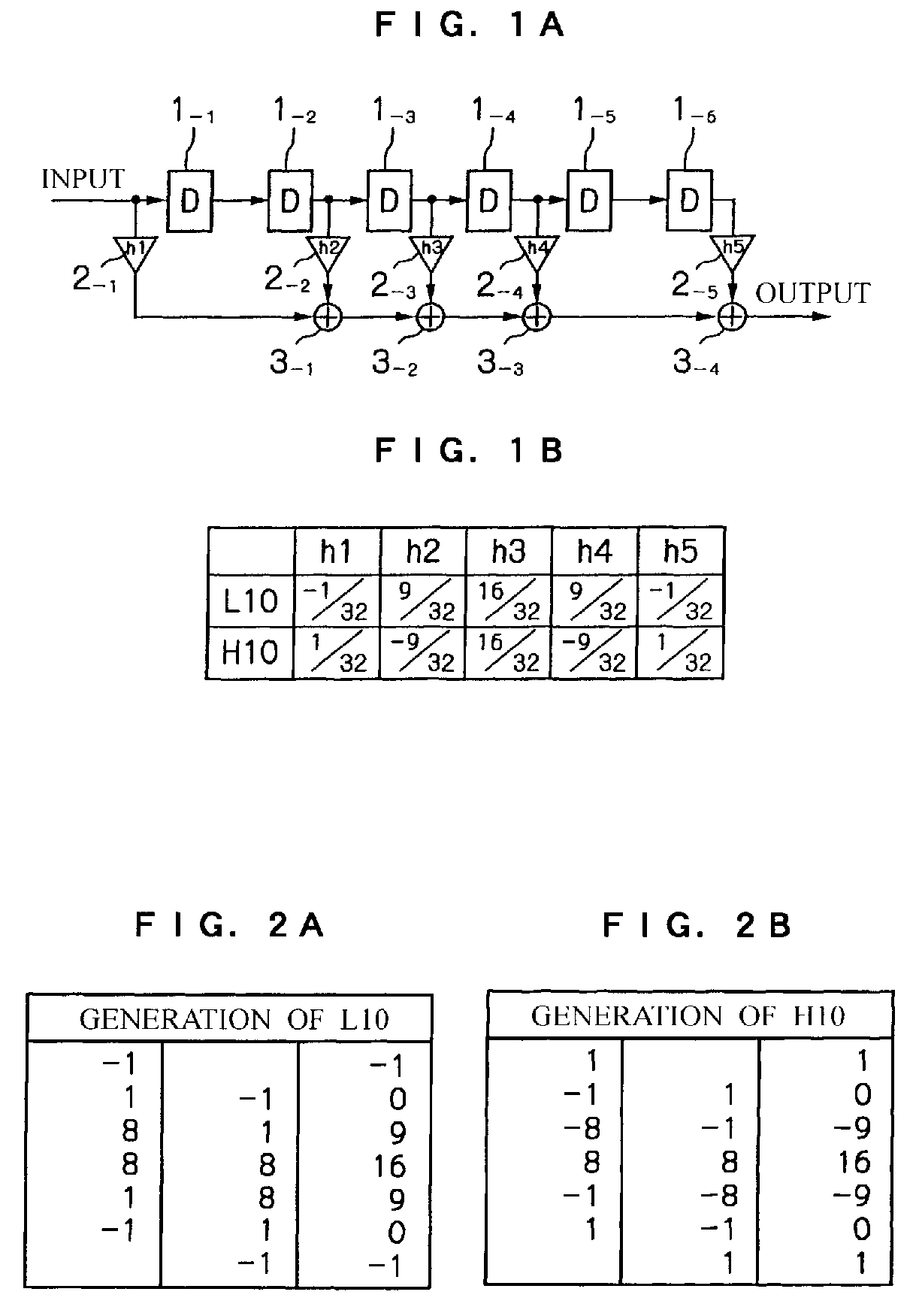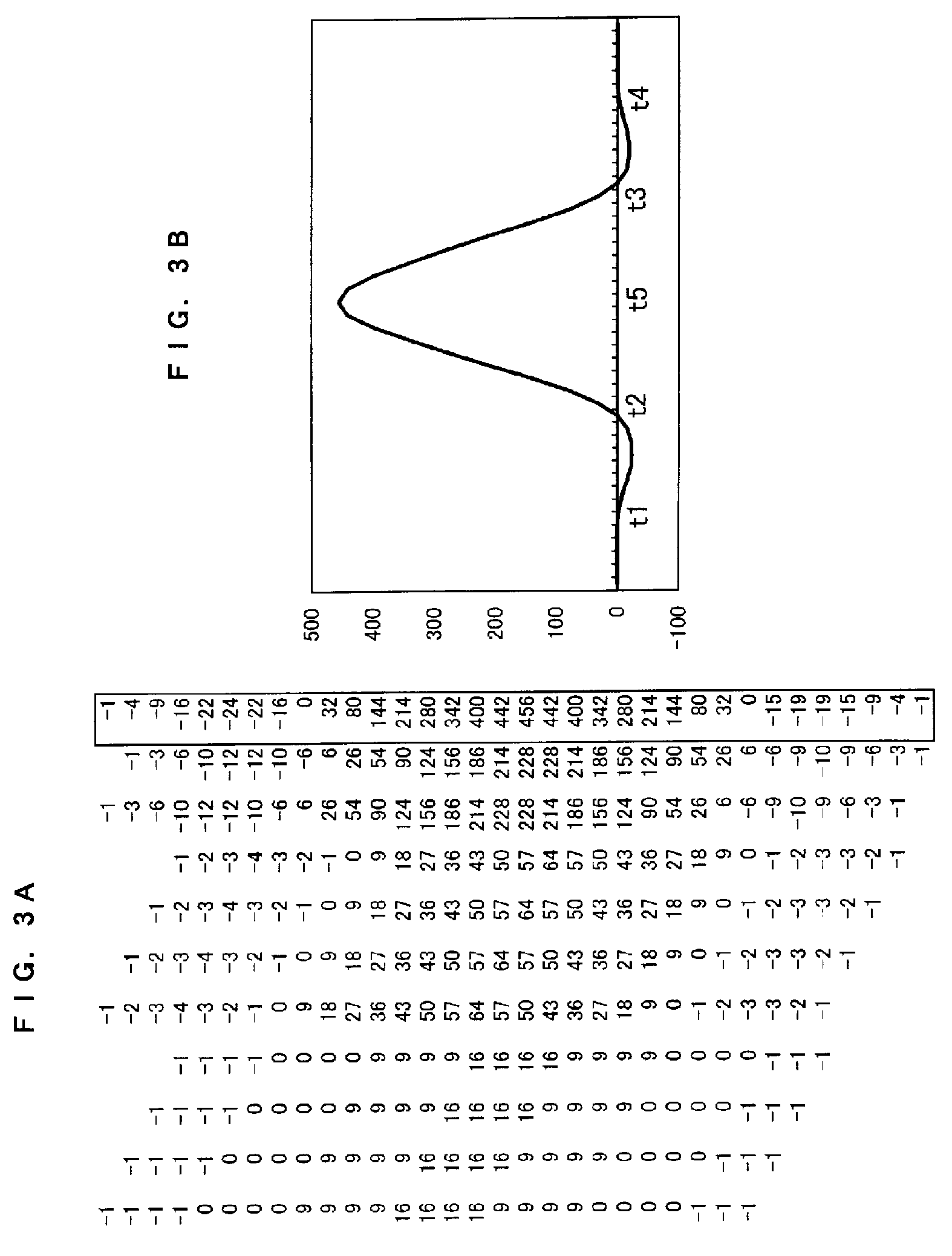Digital filter design method and device, digital filter design program, and digital filter
a filter and design method technology, applied in the field of digital filter design methods and devices, digital filter design programs and digital filters, can solve the problems of difficult to set window functions or approximate expressions appropriately, not being able to easily design filters with desired characteristics, and not being able to obtain satisfactory frequency characteristics, etc., to prevent the generation of discretization errors in the filter coefficient obtained, reduce the number of circuit elements, and eliminate the use of window functions
- Summary
- Abstract
- Description
- Claims
- Application Information
AI Technical Summary
Benefits of technology
Problems solved by technology
Method used
Image
Examples
first embodiment
[0045]A filter design method according to a first embodiment allows an FIR filter having a desired frequency characteristic to be designed by only creating two types of 3-tap unit filters L1n′, H1n′ which will be explained below and combining them. The suffix “n” to each numeral indicating the unit filter denotes the number of clocks of a delay to be inserted between taps, that is, the number of “0”s to be inserted between filter coefficients (which will be explained in detail later).
[0046]First, two types of 5-tap unit filters L1n, H1n which serve as a reference in understanding the above described two types of 3-tap unit filters L1n″, H1n′ will be explained. FIGS. 1A and 1B are diagrams showing the 5-tap unit filters L10, H10. FIG. 1A shows the circuit structure and FIG. 1B shows numerical sequences of filter coefficients.
[0047]As shown in FIG. 1A, the 5-tap unit filters L10, H10 delay an input signal sequentially by 1 clock CK at a time using six cascade-connected D-type flip flo...
second embodiment
[0112]A second embodiment of the present invention will be explained. In the above described first embodiment, as filter coefficients of the 3-tap low-pass unit filter L10′, those obtained by dividing a numerical sequence {−1, 0, 9, 16, 9, 0, −1} / 32 making up filter coefficients of the 5-tap low-pass unit filter L10 into two parts and then adjusting a numerical sequence {8, 9, 0, −1} / 16 which is one of them are used.
[0113]Furthermore, as filter coefficients of the 3-tap high-pass unit filter H10′ those obtained by dividing a numerical sequence {1, 0, −9, 16, −9, 0, 1} / 32 making up filter coefficients of the 5-tap high-pass unit filter H10 into two parts and then adjusting a numerical sequence {8, −9, 0, 1} / 16 which is one of them are used. Since filter coefficients of both of these 3-tap unit filters L10′, H10′ are of an asymmetric type, phase linearity is not guaranteed as described above.
[0114]In contrast, the second embodiment is designed to realize a linear phase characteristic ...
PUM
 Login to View More
Login to View More Abstract
Description
Claims
Application Information
 Login to View More
Login to View More - R&D
- Intellectual Property
- Life Sciences
- Materials
- Tech Scout
- Unparalleled Data Quality
- Higher Quality Content
- 60% Fewer Hallucinations
Browse by: Latest US Patents, China's latest patents, Technical Efficacy Thesaurus, Application Domain, Technology Topic, Popular Technical Reports.
© 2025 PatSnap. All rights reserved.Legal|Privacy policy|Modern Slavery Act Transparency Statement|Sitemap|About US| Contact US: help@patsnap.com



